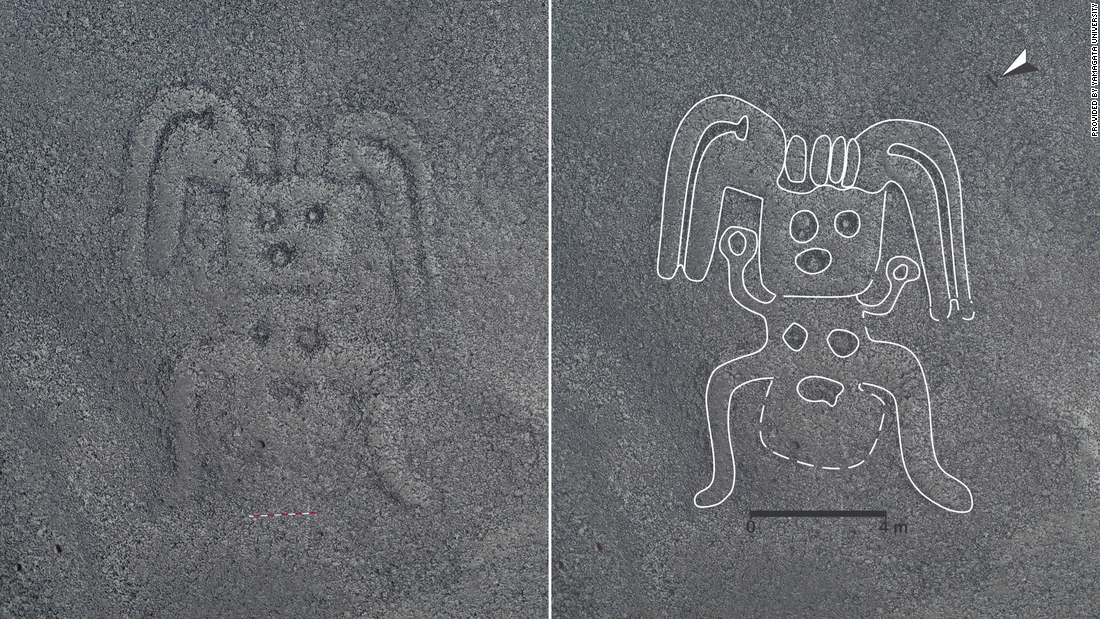Products You May Like
Researchers from Yamagata University, in Yamagata, Japan, discovered the ancient pictures, which are known as geoglyphs, or Nazca Lines. They were carved out of the sand on a Peruvian coastal plain and resemble living things and other objects.
The figures were created by removing the black stones that cover the land, exposing the white sand, the scientists said, and are categorized into two main types based on how they were likely produced. The larger Type A geoglyphs were made by removing stones to form lines, while Type B, the smaller ones, were created by removing stones to make solid-colored surfaces.
The area was declared a UNESCO World Heritage Site in 1994. At the time, just 30 geoglyphs had been identified.
Led by Professor Masato Sakai, the team used fieldwork and high-resolution 3D data to find the new images, which are thought to date back to at least 100 BC to AD 300, according to a news release.
The team also worked with IBM Japan between 2018 and 2019 to find its first geoglyph through artificial intelligence at this location. Sakai and other researchers at Yamagata University have been studying the lines since 2004, and are working to bring awareness to their existence to preserve them for future generations.
This article was originally published by Cnn.com. Read the original article here.



